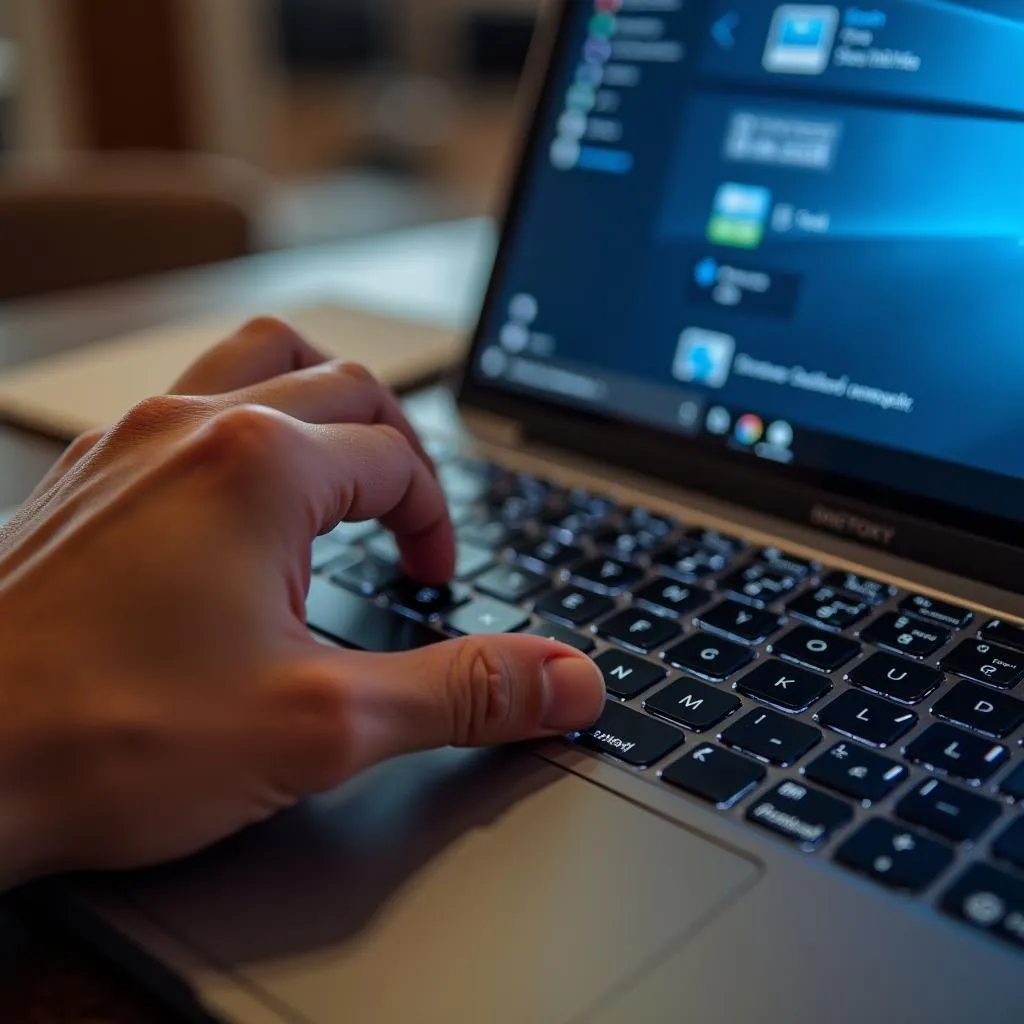Have you ever wished you could personalize the look of your device even when it’s not in use? Changing the color on standby might seem like a small detail, but it can add a touch of personality and visual interest to your tech. Whether you’re using a phone, laptop, or smart home device, adjusting the standby color can create a subtle yet noticeable difference. This guide will explore various methods and options for changing the color on standby, allowing you to tailor your device’s appearance to your liking.
Exploring Standby Color Options
Before diving into the “how-to,” let’s explore the range of color options you might encounter:
- Solid Colors: This is the most common option, allowing you to select a single color for your standby screen.
- Gradients: Some devices offer the ability to create a gradient effect, blending two or more colors seamlessly.
- Patterns and Textures: Certain devices might provide pre-set patterns or textures for a more visually dynamic standby screen.
- Photos: Personalize your device further by using a favorite photo as your standby background, often with the option to adjust its opacity for a subtler effect.
 Device showing various standby color options
Device showing various standby color options
How to Change the Color on Standby: Device-Specific Guides
The process for changing the color on standby can vary significantly depending on the device you’re using. Let’s break down the steps for some of the most common devices:
Smartphones: Android & iOS
Android:
- Access Settings: Navigate to your phone’s settings menu.
- Display Settings: Look for an option related to “Display” or “Screen.”
- Standby/Always-on Display: You might find a specific setting for “Standby,” “Always-on Display,” or “Screen Saver.”
- Customize: Explore the available customization options, including color selection, brightness adjustments, and scheduling features.
iOS:
- Open Settings: Go to the “Settings” app on your iPhone.
- Wallpaper: Select the “Wallpaper” option.
- Choose a New Wallpaper: You can select from Apple’s pre-set wallpapers or use one of your own photos. While iOS doesn’t offer specific standby color adjustments, changing your wallpaper influences the overall look of your locked screen.
Laptops and Computers
Windows:
- Personalization Settings: Right-click on your desktop and select “Personalize.”
- Background: Choose the “Background” option from the left-hand menu.
- Select a Color or Image: Select a solid color, gradient, or image for your desktop background. This will be visible on your lock screen and when your computer is inactive.
Mac:
- System Preferences: Go to the Apple menu and select “System Preferences.”
- Desktop & Screen Saver: Click on “Desktop & Screen Saver.”
- Choose a Folder of Images: You can select a folder of images that will rotate as your desktop background, influencing the look of your standby screen.
 Person customizing laptop standby color in settings
Person customizing laptop standby color in settings
Smart Home Devices
For smart home devices like smart speakers or displays, the process for changing the standby color will vary depending on the brand and model. Consult your device’s user manual or the manufacturer’s website for specific instructions.
Tips for Choosing the Right Standby Color
While personal preference plays a significant role, here are some factors to consider when selecting a standby color:
- Visibility: Opt for a color that contrasts well with your device’s icons and notifications for easy readability.
- Mood: Choose colors that evoke the desired mood. For example, cool blues and greens can be calming, while warmer tones might be more energizing.
- Battery Life: On devices with OLED or AMOLED screens, using darker standby colors can potentially save battery life as these screens illuminate individual pixels, meaning black pixels are essentially turned off.
Troubleshooting: Common Issues and Solutions
- Changes Not Saving: Ensure you’ve saved your settings correctly. Sometimes, a device restart might be necessary for changes to take effect.
- Limited Options: The availability of customization options depends on your device’s manufacturer, model, and operating system version.
- Compatibility Issues: If you’re using a third-party app for customization, ensure it’s compatible with your device and operating system version.
Conclusion
Changing the color on standby allows you to add a personal touch to your digital experience. Whether you prefer subtle hues or vibrant shades, the ability to customize this detail enhances your interaction with technology. Explore the various options available on your devices and discover how a simple color change can transform your standby screen.
Need further assistance with personalizing your device or have other tech-related questions? Our team at Color Box Hà Nội is here to help! Contact us at 0373298888 or email us at [email protected]. Visit our office at 86 Cầu Giấy, Hà Nội, for expert advice and top-notch service.

